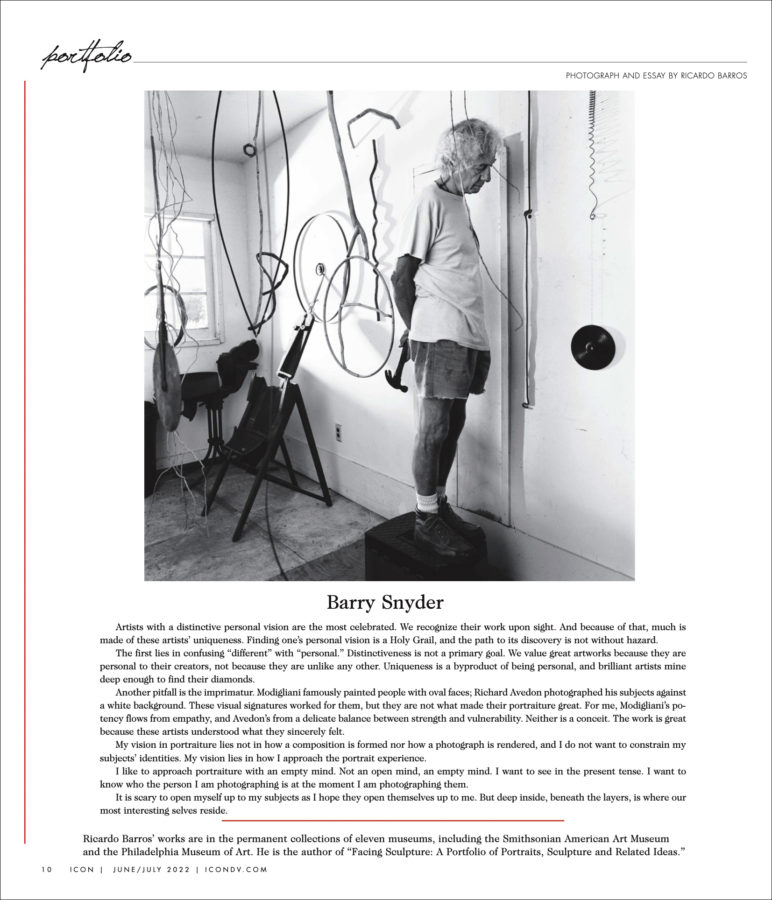Barry Snyder
Artists with a distinctive personal vision are the most celebrated. We recognize their work upon sight. And because of that, much is made of these artists’ uniqueness. Finding one’s personal vision is a Holy Grail, and the path to its discovery not without hazard.
The first lies in confusing “different” with “personal”. Distinctiveness is not a primary goal. We value great artworks because they are personal to their creators, not because they are unlike any other. Uniqueness is a byproduct of being personal. Brilliant artists mine deep enough to find their own diamonds.
Another pitfall is the imprimatur. Modigliani famously painted people with oval faces; Richard Avedon photographed his subjects against a white background. These visual signatures worked for them, but they are not what made their portraiture great. For me, Modigliani’s potency flows from empathy, and Avedon’s from a delicate balance between strength and vulnerability. Neither is a conceit. The work is great because these artists understood what they sincerely felt.
My own vision in portraiture lies not in how a composition is formed, nor in how a photograph is rendered. I do not want to constrain my subjects’ identities. My vision lies in how I approach the portrait experience.
I like to approach portraiture with an empty mind. Not an open mind, an empty mind. I want to see in the present tense. I want to know who the person I am photographing is at the moment I am photographing them.
It is scary to open myself up to my subjects as I hope they open themselves up to me. But way deep inside, beneath the layers, is where our most interesting selves reside.

